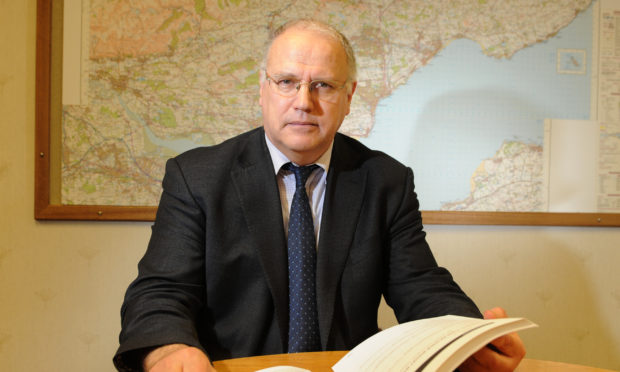Tayside and Fife faces an £11 million increase to its council tax bill next year under a Scottish Government plan.
The SNP administration revealed on Monday night how much each local authority in Scotland would receive in funding for 2019-20.
While the total allocation has gone up for councils, critics say it amounts to a cut because the extra cash is for new responsibilities placed on them, such as the extension of childcare and personal care.
The financial settlement published by the Scottish Government has assumed councils will raise the local tax by the 3% maximum, imposing an extra £80m tax burden on Scottish households.
The overall figure for councils, which includes day-to-day and projects budgets, is listed by the government as £11.2bn.
Derek Mackay says that is a 2% real terms increase of £210m on the previous year.
The Finance Secretary added: “The Scottish Government has continued to ensure that our partners in local government receive a fair funding settlement despite further cuts to the Scottish Budget from the UK Government.”
Fife will get £705m for 2019-20, Dundee £328m, Perth and Kinross £288m Angus £227m.
Those figures assume that town halls once again increase council tax by 3%.
That would see a band D household in Dundee paying an extra £38 a year.
Council officials are examining the impact on services from the deal, but more savings will be required.
Labour’s David Ross, the co-leader of Fife Council, has estimated a black hole of £12m for the coming financial year, without fresh spending reductions.
“We are currently looking at a whole list of savings that we would have to make,” he said.
“We are doing our best to minimise, as well always do, the impact on frontline services, but when you get a cut of this magnitude it’s very difficult to do that.”
David Alexander, the SNP chief in Fife and the council’s co-leader, admitted their allocation has gone down and more cuts are on the way.
“We have savings to make but we have also been given additional money which, whilst ring-fenced, is very welcome,” he said.
“Our overall reduction is similar to the Scottish Government reduction from Westminster.
“So far, no political parties have sat down seriously and talked to the Scottish Government about options.
“Until they do, and put forward their own ideas, any criticism needs to be seen in that light.
“We can balance the budget with this settlement.”
The umbrella group for councils COSLA has rubbished the claimed increase, saying that only funds new commitments, including implementing Frank’s Law, the extension of free childcare and bringing business rates changes into force.
Gail Macgregor, from COSLA, fears councils are “running towards a cliff edge”.
“The circular announcing individual council budgets allows us to see the real impact of the £237m pound cut on the ground, and there can be no hiding from the fact that budgets at the local level, in local communities, have gone down substantially,” he said.
The independent Scottish Parliament Information Service said last week that the core local government revenue settlement “falls in real terms by £319m”.
It is due to provide an update on the latest allocations for individual councils in the coming days.










